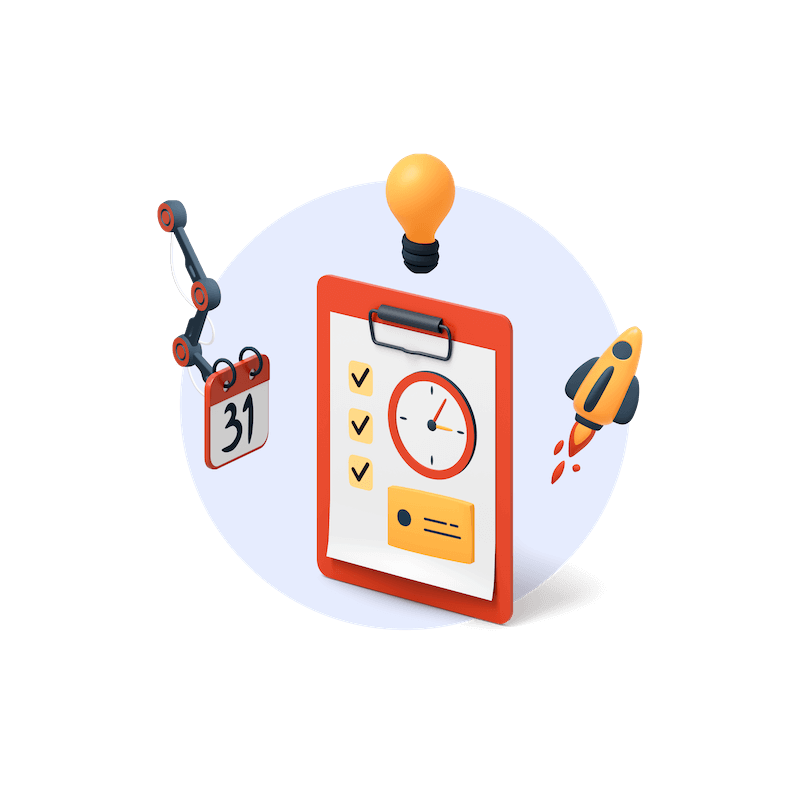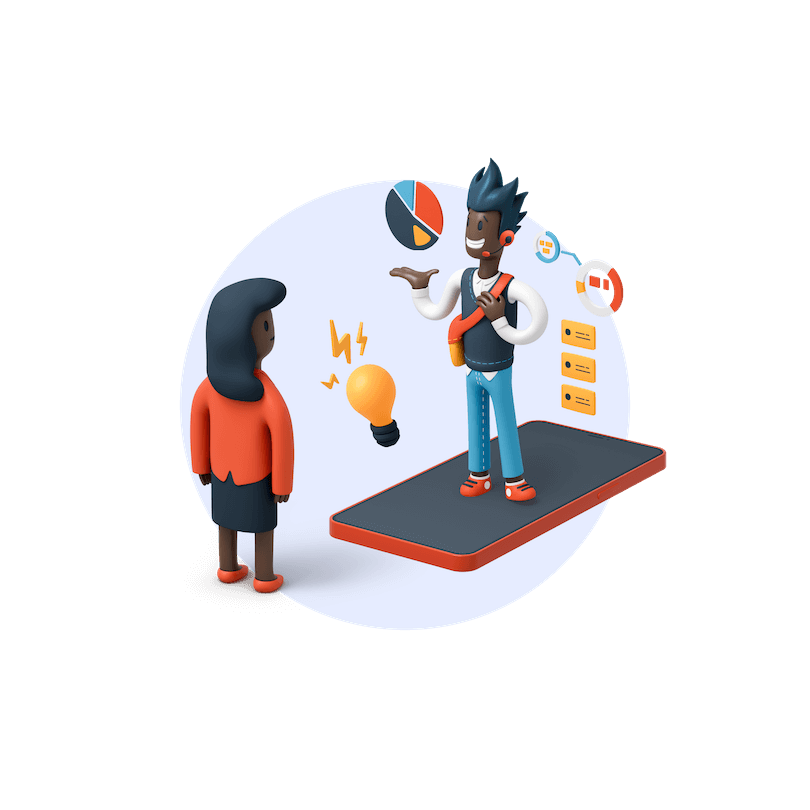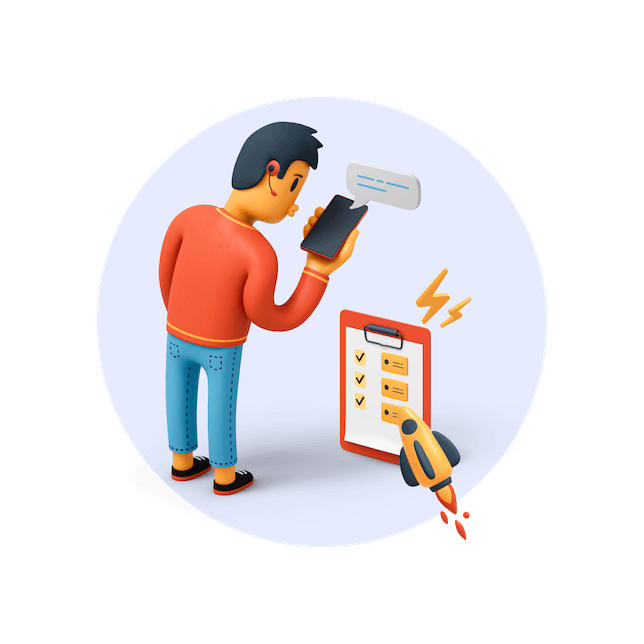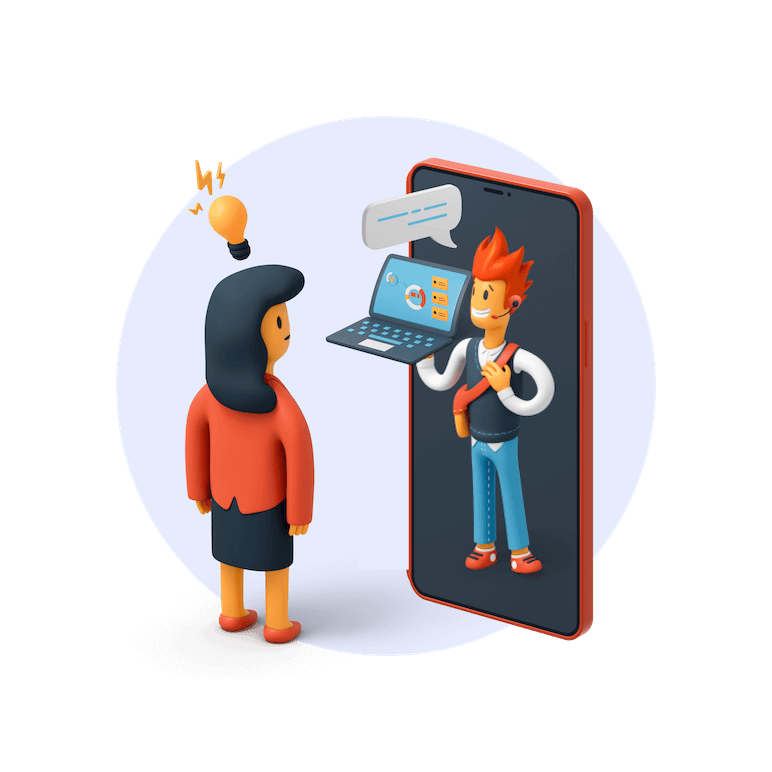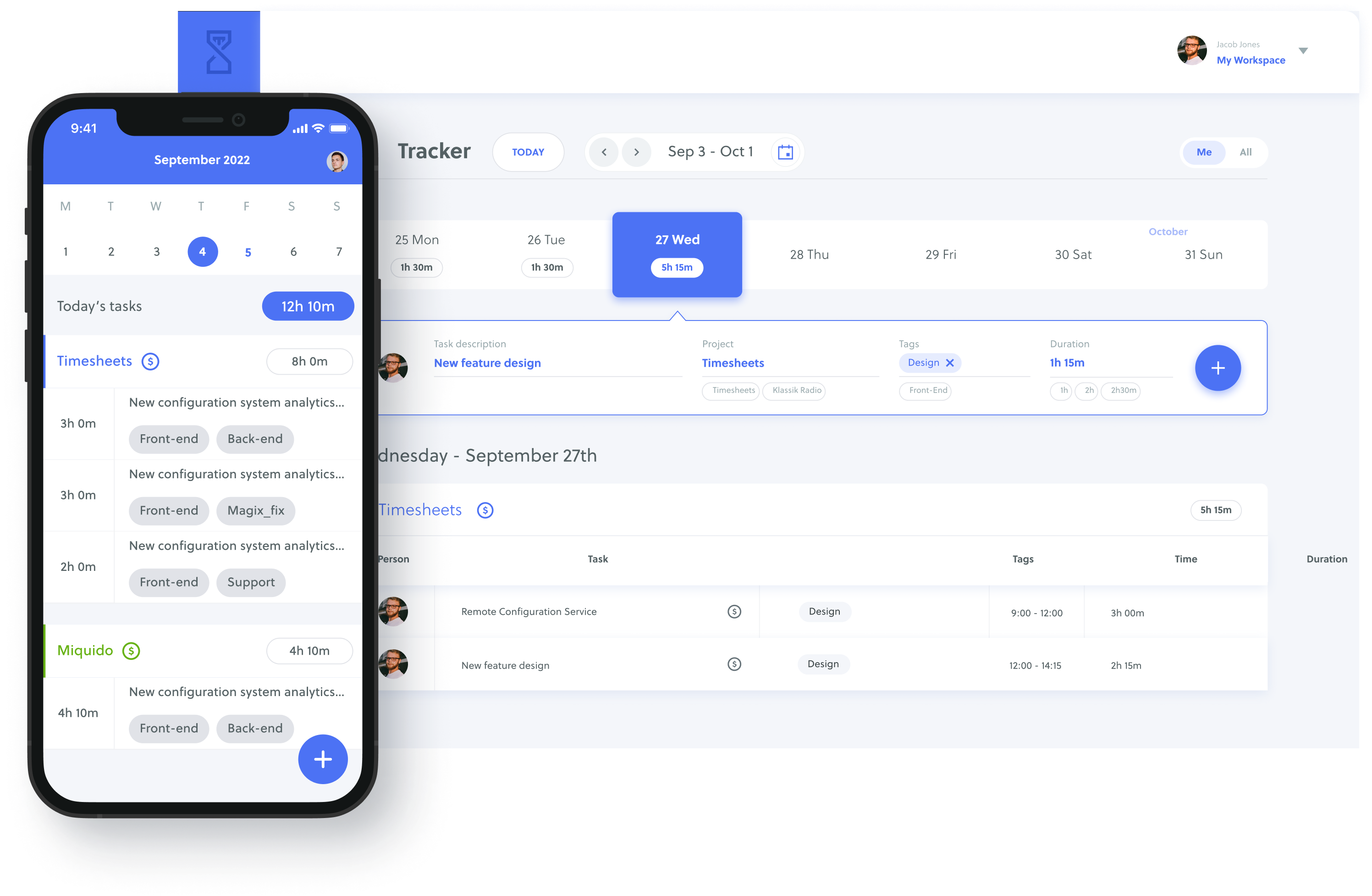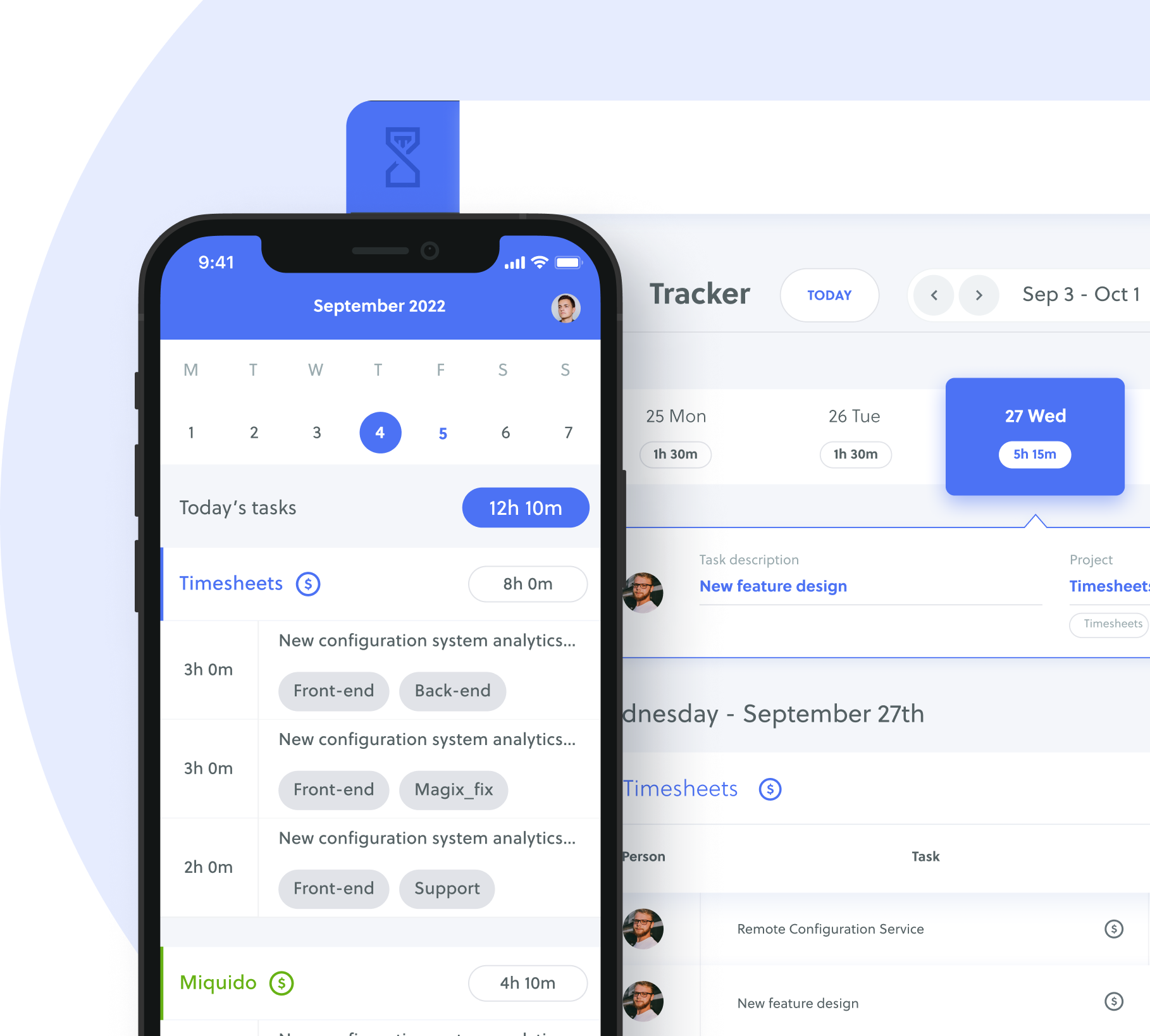We’ve all got a lot on our plate. We’re juggling work, family, maybe some hobbies, and social obligations. Sometimes, it feels like there’s just not enough time in the day to get everything done.
But what if you didn’t need as much time to get certain things done as you thought? You’d definitely have a lot more free time in your day. That’s where Parkinson’s law comes in. And in this blog post, we’re going to talk about how to be more productive and overcome Parkinson’s law.
Ready? Let’s go.
Table of Contents
What is the Meaning of Spuddle?
Spuddle means working slowly or inefficiently to achieve nothing while feeling like you’re “busy,” especially because you slotted in more time than what was actually needed.
The term was first coined by Cyril Northcote Parkinson in his 1955 essay “Parkinson’s Law”. In the essay, Parkinson states that “work expands so as to fill the time available for its completion”.
Spuddle Examples
So what does spuddling look like? Some examples are
- Spending too much time on email when a response could easily be sent in a few minutes
- Trying to do too many things at once and not being able to focus on any one task
- Procrastinating by checking social media or watching TV when there are tasks that need to be done
- Filling out paperwork that could be easily completed if you just sat down and did it
All of these things can be categorized as ‘procastination’ lead to a feeling of being overwhelmed and not being productive. But with a bit of organization and planning, it’s possible to overcome Parkinson’s law and get more done in less time.
What is Parkinson’s Law?
Parkinson’s law is the idea that “work expands so as to fill the time available for its completion.” That very phrase was actually part of Cyril Northcote Parkinson’s first sentence in his 1955 essay “Parkinson’s Law” published in The Economist.
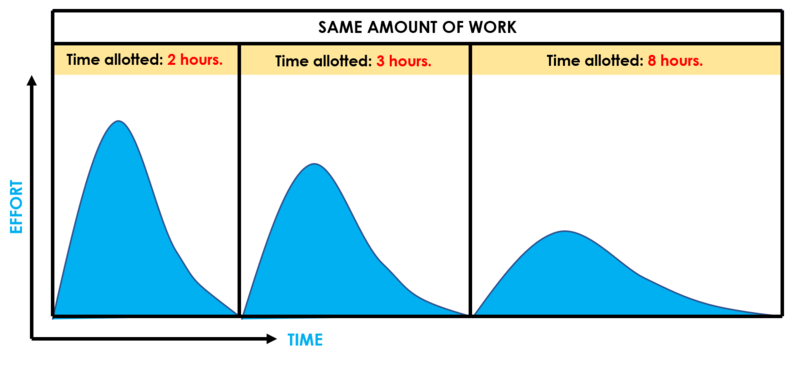
The theory behind Parkinson’s law is that people will take as much time as they’re given to complete a task. So if you give someone a week to do something, they’ll take a week. But if you give them a day, they’ll probably be able to get it done in a day.
While this idea does have its limitations (you can’t expect someone to write you a novel in a week), it has been tested and found to be true in many realistic cases. And though it can be frustrating when you feel like you don’t have enough time in the day, there are ways to overcome Parkinson’s law and be more productive.
Parkinson’s Law Statistics
So are there studies to back this idea up? Yes. Over the years there have been many demonstrations of Parkinson’s first law.
- Starting back in the 1960s, researchers found that when subjects were ‘accidentally’ given more time for a task, that said task took longer to complete.
- In another set of studies in 1999, subjects were asked to evaluate four sets of photos, and when they were told that the fourth set was canceled, they spent more time ‘dallying’ on the third instead of just being done with it.
- More recently in 2016, Sweden’s officials introduced a six-hour work day instead of eight hours when they found that it led to less stress, fewer sick days, and a boost in productivity for their nurses.
- And another study showed that members of a logging crew cut significantly more trees when their mill deliveries were limited to 1-2 days per week compared to the whole week. Since they were paid on how many pieces they cut, there was an incentive to maximize production early within this timeframe.
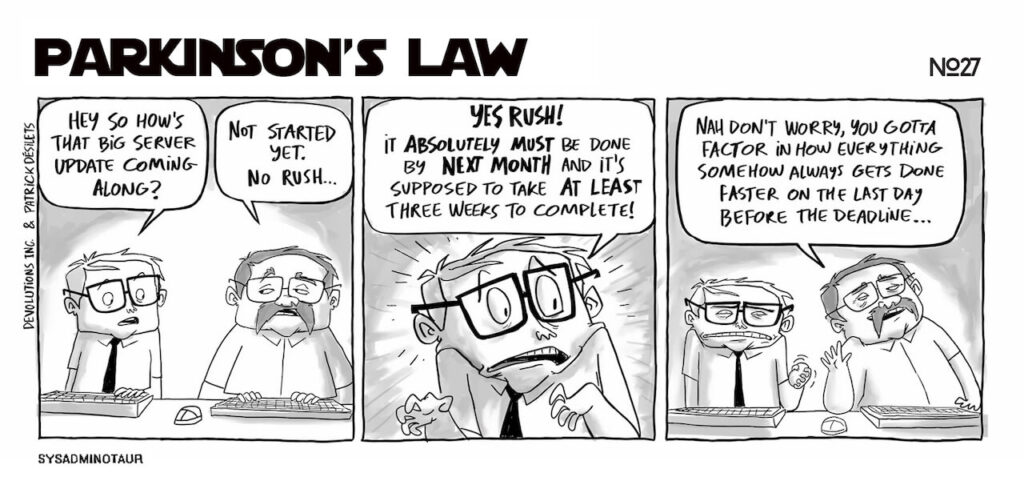
The Student Syndrome
The Student Syndrome is a term introduced by Eliyahu M. Goldratt in his novel Critical Chain in 1997. It’s a condition that is found mostly in students (thus the name), and it’s a form of ‘planned procrastination’ where a student will only start to work on their assignment at the last possible moment before its deadline.
Students who are experiencing the Student Syndrome may feel like they can’t keep up with the workload, they’re not smart enough, or they don’t have enough time. And this can lead to procrastination and a feeling of being overwhelmed.
Law of Triviality
The law of triviality (another one by C. Northcote Parkinson in 1957) is the idea that people will give more attention and weight to unimportant details or tasks rather than the important ones. And it can be a major obstacle to productivity, especially in the workplace.
To paraphrase Parkinson’s example in the workplace, imagine a committee whose job was to approve the plans for nuclear power plant. But instead of focusing on the design of the plant itself, they’re spending most of the time talking about minor, easy-to-grasp issues like what kind of materials to use for the staff bicycle shed.
All of these things can lead to a feeling of being overwhelmed and not being productive.
Parkinson’s Law in Project Management
When it comes to project management, Parkinson’s Law says people will spend all of their allocated time on a task, regardless of how long it actually takes. Doing that with a task with a deadline, as you can imagine, can waste a lot of time and resources.
So, for example, a person has one week to finish an 8 hour task, but rather than completing it on the first day with all of their strength, the person uses less strength and spends the week on it. Many reasons contribute to people’s unwillingness to complete work before the deadline. Research suggests that this could be due to the desire to appear busy in order not to receive additional tasks, the desire to avoid having resources withdrawn due to overperformance, and the natural tendency towards laziness and procrastination.
According to Chapter 6 (Project Schedule Management) of Guide to the Project Management Body of Knowledge, the following habits in project management may trigger Parkinson’s law:
- Estimating how long an activity takes based on past data – while less time-consuming and costly, it has also shown to be less accurate. The durations may be unnecessary long, and that’s when Parkinson’s law starts to ring true for employees. There should be a bigger focus on the project’s finer details and a realistic evaluation on how much time and resources it should take a person given their skillset.
- Giving too much contingency time – According to Parkinson’s Law, people will use the reserve for other activities instead of contingencies because they think they have more time. So most likely, the contingency reserve will be used (wrongfully) rather than reduced or eliminated. So it’s important to set realistic, but tight deadlines.
Examples of Parkinson’s Law in the Workplace
Basecamp is a software company whose CEO decided to implement a 4-day work week in the summer. What he found was that his employees were more productive in those 4 days, than they were in 5.
Why is that? Here are his words exactly:
“The key is in the constraint..Removing a day each week forces you to prioritize the work that really matters, and let the rest go. It’s not about working faster, but learning to work smarter. It’s about honing your prioritization, scope hammering and judo skills.”
Another example of Parkinson’s Law in the workplace are meetings. There are times when people ramble, exceeding the time allottment, with no structure or agenda. Next thing you know, you leave not knowing what was said in the last 2 hours.
Former General Electric CEO Jack Welch told Harvard Business Review:
“Frightened, nervous managers use thick, convoluted planning books and busy slides filled with everything they’ve known since childhood. Real leaders don’t need clutter. People must have the self-confidence to be clear, precise, to be sure that every person in their organization — highest to lowest — understands what the business is trying to achieve.”
Many people think they’ll look smarter if they use big words. It’s just a waste of time – workplace communication should always be clear. But we do it anyway trying to fill in the meeting’s allotted slot.
How to Overcome Parkinson’s Law?
So now that we have our definitions and examples in order, let’s talk about how we can overcome Parkinson’s Law.
Set Priorities
One of the best ways to overcome Parkinson’s law is to set priorities. When you know what’s important, and what can wait, it becomes easier to focus on the task at hand. This way, you’re less likely to be overwhelmed and more likely to get things done.
There are a few different ways to set priorities:
- Urgent vs. important – This is one of the most popular ways to set priorities. Urgent tasks are those that need to be done right away, while important tasks are those that may not need to be done right away, but are still important.
- High-value vs. low-value – This is another way to look at tasks, with high-value tasks being those that are worth your time and resources, and low-value tasks being those that are not.
- Deadlines vs. non-deadlines – This is a little different from the other two, as deadlines are self-explanatory, while non-deadlines may or may not have a due date assigned to them.
When you’re able to set your priorities, it becomes easier to work on the most important tasks first. This way, you’re less likely to be overwhelmed and more likely to get things done.
Definition of Done
The definition of done is a set of criteria that explains when a task is completed. This can help to avoid confusion and ensure that everyone is on the same page when it comes to what needs to be done. It can also help to prevent Parkinson’s law from taking effect, as everyone will know when the task is finished.
There are a few different reasons why you might want to define a definition of done:
- To avoid confusion – By having a set of criteria that explain when a task is completed, there is less chance for confusion about what needs to be done and how it should be done.
- To prevent Parkinson’s law – As mentioned earlier, Parkinson’s law can cause tasks to take longer than they should because people think they have more time. Defining a definition of done can help to prevent this from happening.
- To measure progress – By tracking how many tasks meet the definition of done, you can get an idea of how much progress is being made. This can be helpful in measuring the effectiveness of your work process.
Set Deadlines
One of the best ways to overcome Parkinson’s law is to set deadlines as a part of your SMART goals. When there is a set time limit for a task, it becomes easier to focus on the task at hand and less likely to be overwhelmed. This way, you’re more likely to get things done in a timely manner.
There are a few types of deadlines:
- Fixed deadlines – These are deadlines that do not change and must be met.
- Variable deadlines – These are deadlines that can be changed, depending on the situation.
- Rolling deadlines – These are deadlines that move along with the task, meaning that as the task gets closer to being completed, the deadline moves closer as well.
When you’re able to set deadlines, it becomes easier to work on tasks in a timely manner. This way, you’re less likely to be overwhelmed and more likely to get things done.
Choose Productivity Method
Being productive at work with the right method can make a big difference. You can go from feeling overwhelmed, unfocused, and unproductive to feeling confident, in control, and ready to take on any challenge.
Here’s a list of some popular productivity methods:
- The Personal Kanban: This is a simple, yet effective, way to manage your tasks. It involves creating a visual representation of your tasks, which can help you to see what needs to be done and when. Trello is an app that basically digitized this concept for teams everywhere.
- The Pomodoro Technique: This is a time management technique that involves working on a task for 25 minutes, then taking a 5-minute break. After 4 pomodoros (or 2 hours), you take a longer break of 15-30 minutes. This technique can help to improve focus and prevent burnout because following Parkinson’s law, you give yourself a short period of time (25 minutes) to complete a certain set of tasks.
- The Eisenhower Matrix: This is a method of prioritizing tasks based on urgency and importance. It can help you to focus on the most important tasks first, which can prevent Parkinson’s law from taking effect.
👉 Related: The 4 Best Productivity Metrics: How to Track Your Success?
Eat the Frog
“Eat the frog” is an idiom that means to do the most challenging task first. The reasoning behind this is that if you get the hard task out of the way, the rest of the day will seem easier in comparison. This can be helpful in overcoming Parkinson’s law, as it prevents tasks from snowballing and becoming more difficult as time goes on.
Productivity Slots
By dividing work into short, timed intervals, it becomes easier to focus on the task at hand and less likely to be overwhelmed. This way, you’re more likely to get things done in a timely manner.
You can call it another version of Pomodoro, but set your own work and break times through some experimentation first – it’s a twist to Pomodoro, called the Flowtime technique. Maybe you find that working for 50 minutes, then taking a 10-minute break is better for you. From there, as we mentioned earlier, you can use the Eisenhower Matrix to get an overview of all your tasks and assign a set of them to be done in that productivity slot.
Deep work
This is the concept of being able to focus intensely on a task for a prolonged period of time. The term was coined by Cal Newport, a computer science professor at Georgetown University and author of “Deep Work: Rules for Focused Success in a Distracted World.” It’s important to be able to do this because it allows you to get into a state of flow, where you’re completely focused on the task at hand and are able to be productive for extended periods of time.
To be able to do deep work, set up a clean, closed, distraction-free environment and determine when and for how long you’ll work. Make sure you’re unbothered during this time of day. Prioritize your highest impact work and make sure you have the tools you need to get it done. And finally, stay disciplined and focused on the task at hand.
Reduce Distractions
You need to be able to eliminate distractions. It can be difficult, but there are a few things you can do to make it easier.
1. Understand your triggers: What are the things that trigger you to get distracted? Is it a certain person, place, or thing? Once you know your triggers, you can avoid them or come up with a plan to deal with them.
2. Set up a distraction-free environment: This means having a clean, organized workspace where you won’t be distracted by anything. So turn off your phone and notifications, work in a secluded area, and try and minimize the number of web pages or apps you’re switching between.
3. Use productivity tools: There are a number of tools that can help you to reduce distractions and increase productivity. Some of these include the Pomodoro technique, the Eisenhower matrix, and deep work.
Track Time
Time tracking has many benefits. It can help you to see where you’re clocking the most hours, and where you might need to make changes. Additionally, it can help to increase productivity as you can see how much time you’re spending on each task, so you can plan your days, productivity slots, and priorities accordingly.
👉 Related: How Agencies Use Timesheet Software to Increase Profitability
Using a time tracker app like Quidlo is one of the best ways to go about it since they come with a full suite of useful features to help you understand your time management (even across teams).
It’s really easy to use – just click the button to start your time tracker and start working – you can add more time manually later if you need to. The great thing about Quidlo is that you can generate custom reports that you can easily share with colleagues or clients, assign projects and roles to team members and track total time spent, and get an overview of your time management over days, weeks, and months.
Final words
So there you have it. By now, you should know what Parkinson’s Law is and how it unfolds for students and employees in their daily endeavors.
Remember that there are a variety of productivity techniques like the Pomodoro technique, the Eisenhower matrix, and deep work sessions to help you through it. You can also reduce distractions by understanding your triggers and setting up a distraction-free environment. Additionally, tracking your time can help you to see where you’re spending your time and how you can be more productive.
Just remember that there’s no one-size-fits-all solution, so find what works best for you and stick with it.


